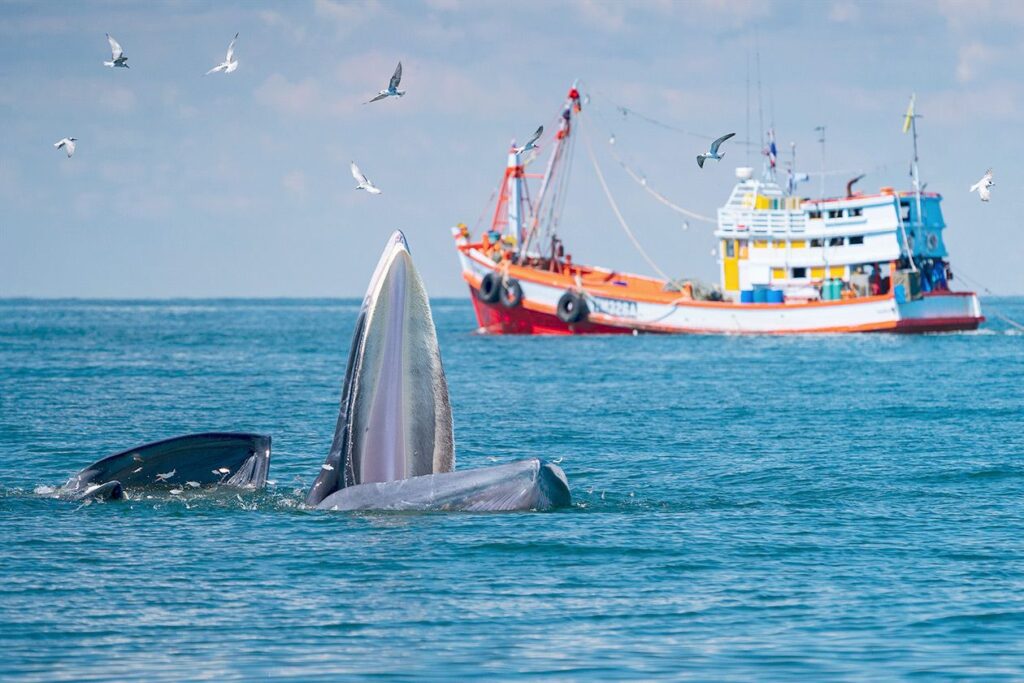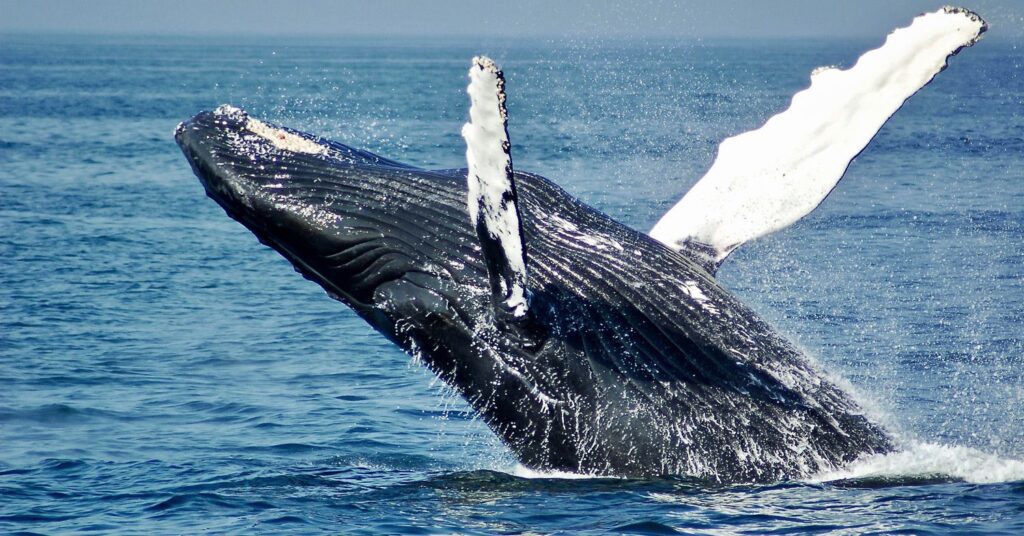Iceland could ban commercial whale hunting in 2024 due to a lack of demand.
The country’s Minister of Fisheries and Agriculture, Svandís Svavarsdóttir, has said that falling income from the practice means it is no longer justifiable. Minke whale hunting officially ended in 2020, and now it looks like fin whaling may not start up in 2022.
The fin whale is the second-largest species on earth after the blue whale. It sits at the top of the food chain and supports overall ecosystem health, in addition to absorbing carbon and sequestering it after death. (Learn more about this process here.)
Fin whales are also listed as both endangered and depleted under the Endangered Species Act and the Marine Mammal Protection Act, respectively. In the Southern Hemisphere alone, nearly 750,000 were killed between 1904 and 1979, while today’s world population is currently estimated to be around 100,000.
Writing for the popular Icelandic news website Morgunblaðið on Friday, Svavarsdóttir said: “Why should Iceland take the risk of keeping up whaling, which has not brought any economic gain, in order to sell a product for which there is hardly any demand?”

Why Iceland might end whale hunting
This drop in demand is directly linked to the reintroduction of commercial whaling by Japan (Iceland’s main market for whale meat) in 2019. Svavarsdóttir’s comments follow several years with almost no whaling due to both this direct competition with Japan and COVID-19.
Iceland’s current quotas will expire at the end of 2023, and Svavarsdóttir suggests that there are “few justifications to authorize the whale hunt” beyond that date. “There is little proof that there is any economic advantage to this activity,” she added.
Activists have welcomed the news, including the wildlife charity Whale and Dolphin Conservation (WDC), which has spent nearly 30 years campaigning for an end to Iceland’s whaling industry.
“Killing fin whales, an endangered species and the second largest creature on our planet, is nothing short of ecocide, especially given the essential role these gentle giants play in the battle against climate change,” says WDC’s Icelandic whaling campaigner Vanessa Williams-Grey.
Fortunately, sustainable and environmentally-friendly activities such as whale watching are growing in popularity. Many hope that this provides a profitable and ethical alternative for both the people of Iceland and those visiting the island.
If Iceland does halt its whaling industry next year, that will leave Japan and Norway as the only two countries still hunting the endangered animals for profit.
The history of whaling: what led us to this point?
An international moratorium on commercial whaling was first introduced in 1986 due to dramatically depleted whale populations. However, Iceland, Japan, and Norway protested the ban and eventually began whaling once again, Norway in 1993, Iceland in 2006, and Japan in 2019. The World Wildlife Fund (WWF) estimates that the three nations alone have killed around 30,000 whales since 1986.
It’s also important to note that the 1985 moratorium on commercial whaling does not apply to subsistence fishing, which is of practical and cultural importance to Indigenous communities around the world. Subsistence fishing has not contributed to depleted populations on nearly the same scale as commercial, industrialized whaling.
All whale hunting remains a contentious issue for welfare and sustainability reasons. But anti-whaling advocates have received criticism for colonial, insensitive, and uneducated attitudes towards Indigenous practices and culture, in addition to the need for survival.
Ultimately, the vast majority of whales were killed when the millennia-old practice of hunting the animals for meat, oil, and other provisions met the advanced technology of post-industrialized society in the 19th and 20th centuries. In fact, some scientists believe that more whales were hunted in the early 1900s than the previous 400 years combined.
In 1946, the International Convention for the Regulation of Whaling (ICRW) established the International Whaling Commission (IWC) in order to properly conserve whale stocks, albeit for the sake of the future of the industry. As of 2018, members of the organizations recognized that the new purpose of the IWC should be to support whale recovery to pre-industrial levels.
But commercial whaling isn’t the only threat to marine animals. Even without it, around 300,000 whales and dolphins are killed per year through ghost fishing and industry bycatch. This is when animals are unintentionally killed by trawlers, ocean plastic, pollution, climate change, and other fishing industry-related problems.


